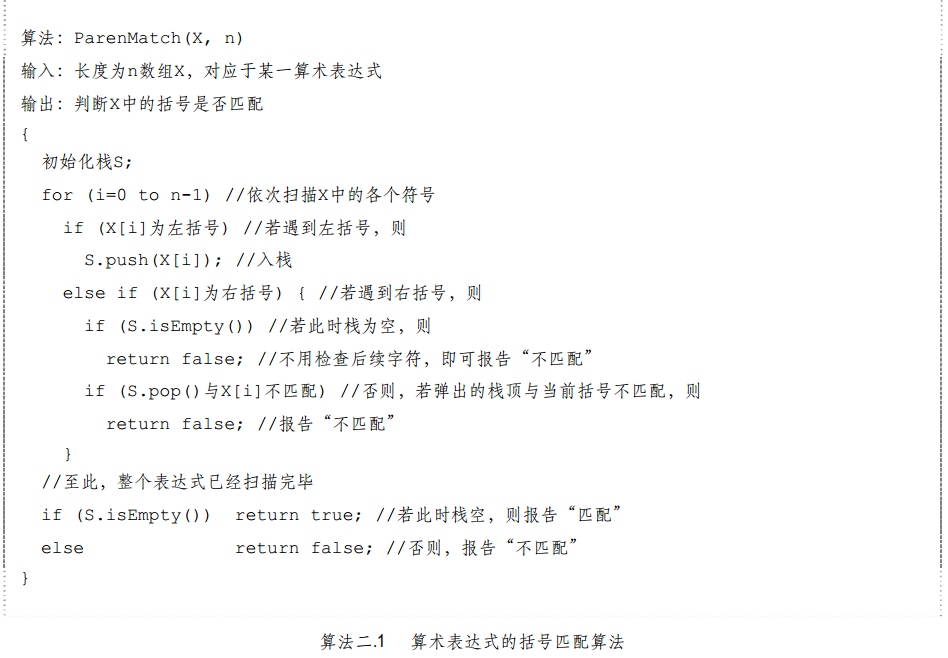基于数组实现Java 自定义Stack栈类及应用
栈是存放对象的一种特殊容器,在插入与删除对象时,这种结构遵循后进先出( Last-in-first-out,LIFO)的原则。java本身是有自带Stack类包,为了达到学习目的已经更好深入了解stack栈,自己动手自建java stack类是个很好的学习开始:自建Java Stack 类Stack 类:package com.stack;import java.util.ArrayList;im
栈是存放对象的一种特殊容器,在插入与删除对象时,这种结构遵循后进先出( Last-in-first-out,LIFO)的原则。java本身是有自带Stack类包,为了达到学习目的已经更好深入了解stack栈,自己动手自建java stack类是个很好的学习开始:
自建Java Stack 类
Stack 类:
package com.stack;
import java.util.ArrayList;
import java.util.Arrays;
/**
* Stack Class
* @author ganyee
*
*/
public class Stack {
//Define capacity constant:CAPACITY
private static final int CAPACITY = 1024;
//Define capacity
private static int capacity;
//Define the top position of stack
//top = -1 meaning that the stack empty
private static int top = -1;
//Basic Object class array
Object[] array;
//Initialize the capacity of stack
public Stack() {
this.capacity = CAPACITY;
array = new Object[capacity];
}
//Get the size of stack
public int getSize(){
if(isEmpty()){
return 0;
}else{
return top + 1;
}
}
//Get whether stack is empty
public boolean isEmpty(){
return (top < 0);
}
//Get the top element of stack
public Object top() throws ExceptionStackEmpty{
if(isEmpty()){
throw new ExceptionStackEmpty("Stack is empty");
}
return array[top];
}
//Push element to stack
public void push(Object element) throws ExceptionStackFull{
if(getSize()== CAPACITY){
throw new ExceptionStackFull("Stack is full");
}
array[++ top] = element;
}
//Pop element from stack
public Object pop() throws ExceptionStackEmpty{
if(isEmpty()){
throw new ExceptionStackEmpty("Stack is empty");
}
return array[top --];
}
//Get the all elements of stack
public String getAllElements() throws ExceptionStackEmpty{
String[] arr = new String[top + 1];
if(!isEmpty()){
for(int i = 0;i < getSize();i ++){
arr[i] = (String)array[i];
}
}
return Arrays.toString(arr);
}
}
自定义ExceptionStackEmpty异常类(关于如何自定义异常类可以看相关博客)
package com.stack;
public class ExceptionStackEmpty extends Exception {
//Constructor
public ExceptionStackEmpty(){
}
//Define myself exception construct with parameters
public ExceptionStackEmpty(String string){
super(string);
}
}
自定义ExceptionStackFull异常类
package com.stack;
public class ExceptionStackFull extends Exception {
//Constructor
public ExceptionStackFull(){
}
//Define myself exception construct with parameters
public ExceptionStackFull(String string){
super(string);
}
}
测试类:
package com.stack;
public class StackTest {
public static void main(String[] args) {
// TODO Auto-generated method stub
Stack stack= new Stack();
System.out.println(stack.getSize());
System.out.println(stack.isEmpty());
try {
stack.push(8);
stack.push(3);
stack.push(4);
stack.push(7);
stack.push(1);
stack.push(8);
stack.push(3);
stack.push(4);
stack.push(7);
stack.push(1);
System.out.println(stack.getSize());
System.out.println(stack.top());
System.out.println(stack.getAllElements());
System.out.println(stack.pop());
System.out.println(stack.pop());
System.out.println(stack.pop());
System.out.println(stack.pop());
System.out.println(stack.pop());
System.out.println(stack.pop());
System.out.println(stack.pop());
System.out.println(stack.pop());
System.out.println(stack.pop());
System.out.println(stack.pop());
} catch (ExceptionStackFull e) {
// TODO Auto-generated catch block
e.printStackTrace();
}catch (ExceptionStackEmpty e) {
// TODO Auto-generated catch block
e.printStackTrace();
}
}
}
测试结果:
0
true
10
1
[8, 3, 4, 7, 1, 8, 3, 4, 7, 1]
1
7
4
3
8
1
7
4
3
8
栈的应用:符号匹配
下面,我们将借助一个栈结构 S,通过对算术表达式自左向右的一遍扫描,检查其中的括号是否匹配。
假设算术表达式为 X = “x0x1x2…xn-1”,其中 xi 可以是括号、常数、变量名或者算术运算符。我们依次检查 X 中的各个符号,非括号的符号都可以忽略。若遇到左括号,则将其压入栈 S 中;若遇到右括号,则将栈顶符号弹出并与该右括号对比。如果发现某对括号不匹配,或者遇到右括号时栈为空,或者整个表达式扫描过后栈非空,都可以断定括号不匹配。
在按照以上规则扫描完所有字符后,若栈为空,则说明括号是匹配的。如果按照前面对栈的实现,每一 push()和 pop()操作都只需常数时间,因此对于长度为 n 的算术表达式,上述算法需要运行 O(n)的时间。
该算法的伪代码描述如 算法二.1 所示:
package com.stack;
public class MatchClass {
public static boolean Match(String str) throws ExceptionStackFull, ExceptionStackEmpty{
Stack stack = new Stack();
str = str.replaceAll(" ","");
char s;
for(int i = 0;i < str.length();i ++){
if(str.charAt(i) == '(' || str.charAt(i) == '{' || str.charAt(i) == '[')
stack.push(str.charAt(i));
else{
if(stack.isEmpty())
return false;
else{
s = str.charAt(i);
switch(s){
case ')':
if((Character)stack.pop() != '(')
return false;
break;
case '}':
if((Character)stack.pop() != '{')
return false;
break;
case ']':
if((Character)stack.pop() != '[')
return false;
break;
}
}
}
}
if(stack.isEmpty()){
return true;
}else{
return false;
}
}
}
package com.stack;
public class ParentMatch {
public static void main(String[] args) {
MatchClass match = new MatchClass();
//String str = "()({})"; //Match
//String str = "()({}) {([()[]])}";//Match
//String str = "([]{)";//Not match
//String str = ")([()] {}";//Not match
String str = "([())]{}";//Not match
try {
if(!match.Match(str)){
System.out.println(str + ": Not Macth");
}else{
System.out.println(str + ": Macth");
}
} catch (ExceptionStackFull e) {
// TODO Auto-generated catch block
e.printStackTrace();
} catch (ExceptionStackEmpty e) {
// TODO Auto-generated catch block
e.printStackTrace();
}
}
}
测试结果:
()({}): Macth
()({}) {([()[]])}: Macth
([]{): Not Macth
)([()] {}: Not Macth
([())]{}: Not Macth
文章参考:数据结构与算法( Java 描述)邓俊辉 著
转载请注明出处,谢谢!
http://blog.csdn.net/github_27609763/article/details/46420149
更多推荐
 已为社区贡献2条内容
已为社区贡献2条内容











所有评论(0)